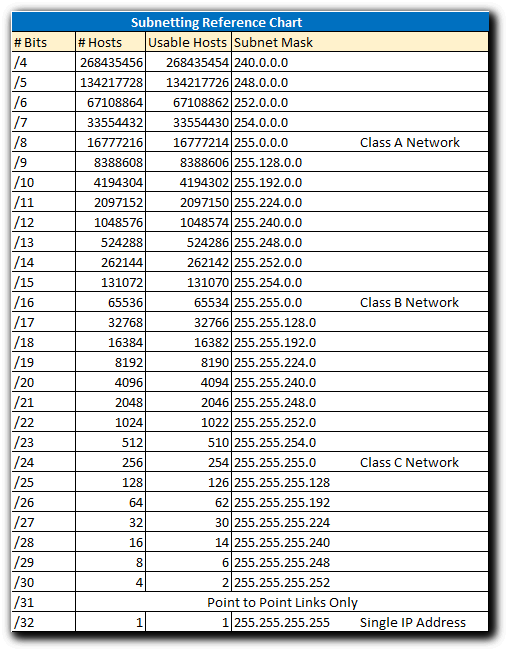

Address bits corresponding to 1 in the IP class’s default mask represent the subnet, and address bits corresponding to a 0 in the default mask represent the host.īy using CIDR notation, our subnet mask calculator can help you easily find the subnet mask-no binary code conversion necessary. This makes it easier to differentiate the host from the subnet. To find which part is the host and which part is the subnet, you must convert both numbers to binary numbers.

Class A, B, and C networks have default masks, and an IP address on an unsubnetted Class A, B, or C network would have an address/subnet mask pair similar to the default mask. One subnet mask limits how many IP addresses can exist on a single network, but multiple subnet masks can be used to organize an entire network into sub-subnets.Ī subnet mask also indicates which part of the IP address refers to the host and which part refers to the subnet. Network security concerns caused by secured and unsecured servers using the same subnetĪ subnet mask is a 32-digit number determining the possible range of IP addresses available in a network.Unnecessary network traffic from hosts handling broadcasts sent over a single subnet.For a single IP subnet to handle everything happening in a large enterprise, it would have to be incredibly large-which means it would be inherently unwieldy. It’s critically important for network administrators in large enterprises to subnet because reorganizing the network in such a way makes it more functional. Once you have these smaller networks, you create a network of interconnecting subnetworks to distribute your network’s load more efficiently. These smaller networks are built up of many other IP addresses sharing the same IP routing prefix as the original IP address used to create the subnets. Subnetting allows network administrators to take bits from the IP address’s host part and use these bits to create smaller networks inside the network. Without subnets, you’d only be able to use one network from each class, which isn’t the most efficient way to work.

The process of subnetting was initially created to solve the shortage of IP addresses over the internet but has since evolved into an IP management best practice for IP network utilization.Įvery IP address is comprised of three different classes or major networks – Class A, Class B, and Class C. Subnetting is the process of breaking down a single network into one or more smaller networks called “sub-networks” or “subnets” for short.


 0 kommentar(er)
0 kommentar(er)
